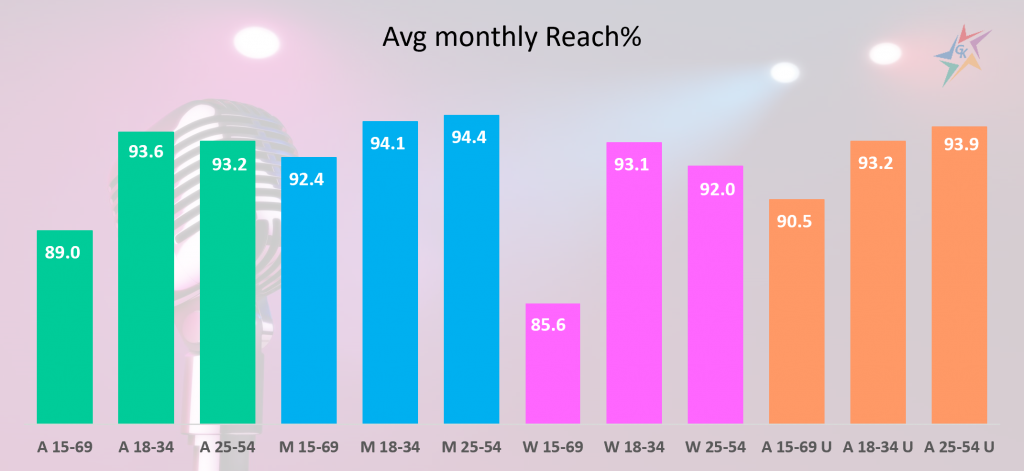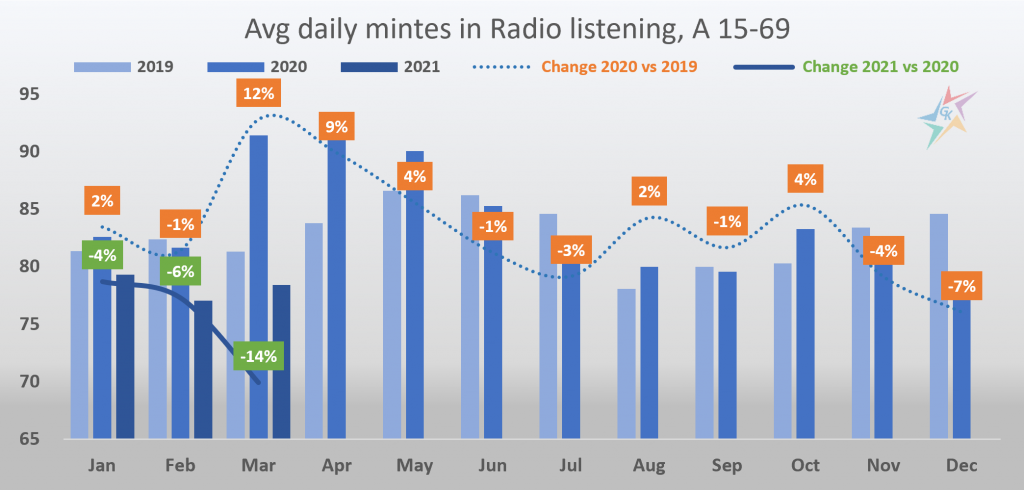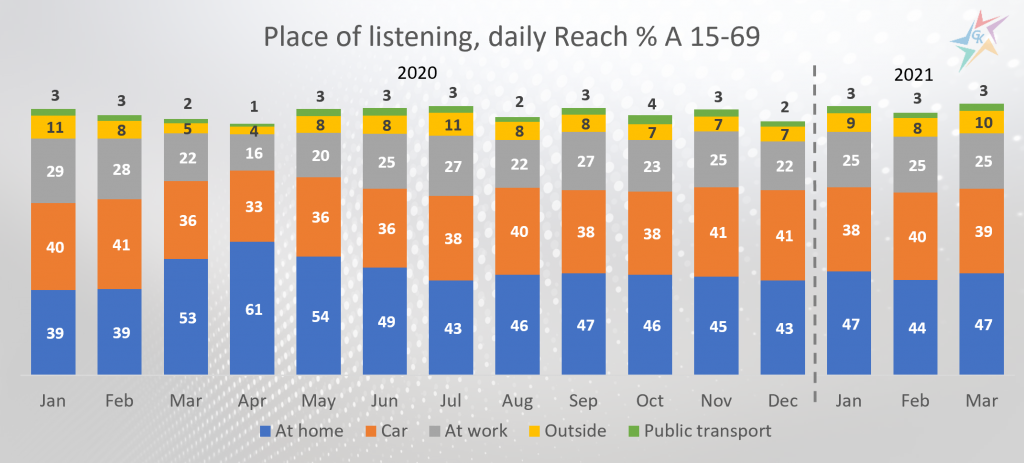Radio is a media that accompanies the daily life of a large part of the population. Popular music and interesting shows on current topics find their audience in the dynamic everyday life. That is why this media channel is extremely popular among the economically active population. Its advantages are often used to announce events, tactical and promotional campaigns. To take a look at the habits of radio listeners and make full use of the media, we analyzed several key indicators, such as Reach%, number of minutes spent in listening to a radio, and a place where media is consumed.
The first indicator we looked at in detail is the average monthly Reach% that radio achieves in March 2021 for three main age groups – people aged 15 to 69, 18 to 34 and 25 to 54, divided by gender, total for the country and living in the cities:

In the broad target group A 15-69, the radio achieves 89% average monthly Reach%. The data for March 2021 is notable by the high average monthly Reach%, which the media achieves among the younger and economically active groups A 18-34 – 93.6% and A 25-54 – 93.2%. The range achieved by both is approximately 5% higher than in the broad target group A 15-69.
Men turn out to be more ardent fans of radio and the Reach% achieved by the media among them is higher among all three age groups compared to women. The most pronounced difference is between men and women aged 15-69 years. In this age group, radio achieves 7% higher coverage among male audiences than female. From the data presented in the chart we can conclude that the radio achieves a higher coverage among the urban audience.
Another interesting indicator that reveals the habits of the audience is the time spent in listening to the radio. The advent of Covid-19 has led to a change in the consumption of all media. The biggest impact on the radio was due to relocation of the audience from office to a “home office”, as well as the less frequent use of personal and public transport. However, whether the closure at home leads to a decrease in radio listenership is shown by the following chart, which presents the minutes we spend on average per day for radio listening:

The first two months of 2020 begin with data close to their relevant months in 2019. March 2020 is marked by the first lockdown for the country and by the growing hunger for information among the population. The change in lifestyle leads to higher media consumption and this is reflected in a 12% growth in the time we spend listening to the radio. This trend continues in April and May 2020, when the average daily listening in minutes continues to grow by 9% and by 4%, respectively. In the period June-September 2020 the situation in the country normalizes and the levels return to those of 2019, but with slight deviations. Growth is also evident in October 2020, when the pandemic situation in the country began to deteriorate again and many people prefer to stay at their homes. In the first quarter of 2021, the levels are lower compared to 2020, but radio programs did the best to keep listeners with interesting formats, games and a desire for dialogue between radio hosts and listeners.
The following chart, which shows how habits are changing depending on the place where the audience listens to the radio, also leads to interesting conclusions:

During the first two months of 2020, the radio has the highest daily Reach% in the car. The state of emergency in the country in March 2020 reversed the trend and people replaced the car and the office with the home environment. As a result, the audience changed their habits and began to use radio mostly at home. Workplace consumption lost its share during the year, but has been growing steadily since the beginning of 2021. The same goes for listening outside (in a restaurant, cafe, shop, outdoors, etc.), as well as in public transport, which is gradually starting to attract streams of people again. On the chart, the sum of the percentages is greater than 100, as in the presented survey the respondents indicated more than one way of listening.
For additional information, please contact our team via the contact form.

